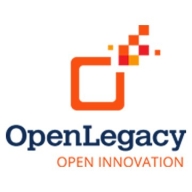

Find out what your peers are saying about Microsoft, Amazon Web Services (AWS), Google and others in API Management.

OpenLegacy helps organizations quickly launch innovative digital services by extending their core back-end systems to the web, mobile and cloud in days or weeks versus months. Our microservice-enabled API integration and management software quickly reduces project backlog by automating and accelerating microservices and API creation, deployment, testing and management from core applications, mainframes and databases. Together, business and IT teams can quickly, easily and securely meet consumer, partner or employee demands for digital services without modernizing or replacing core systems, and without special programming skills or invasive changes to existing systems and architectures. OpenLegacy is designed for ongoing management of microservices APIs and is based on open standards, so our software plays nice with your current technology stack and supports agile, DevOps and continuous development. Learn why leading companies choose OpenLegacy at www.openlegacy.com.
Red Hat Integration is a comprehensive platform that facilitates agile integration, connecting applications, data, and devices. Designed for developers and enterprises, it offers modern integration features to streamline operations and enhance connectivity.
Red Hat Integration provides an efficient solution for creating and managing integrations with its robust tools and services. It supports modern IT environments, promoting collaboration and reducing complexity with its open-source technology. Key features like messaging, transformation, and service orchestration empower businesses to implement flexible integration strategies seamlessly.
What are the key features of Red Hat Integration?Red Hat Integration finds its application in industries like finance and healthcare, where it plays a vital role in secure data processing and compliance management. Its flexibility and scalable architecture make it a preferred choice for enterprises aiming to enhance their digital capabilities through efficient system integration.
We monitor all API Management reviews to prevent fraudulent reviews and keep review quality high. We do not post reviews by company employees or direct competitors. We validate each review for authenticity via cross-reference with LinkedIn, and personal follow-up with the reviewer when necessary.